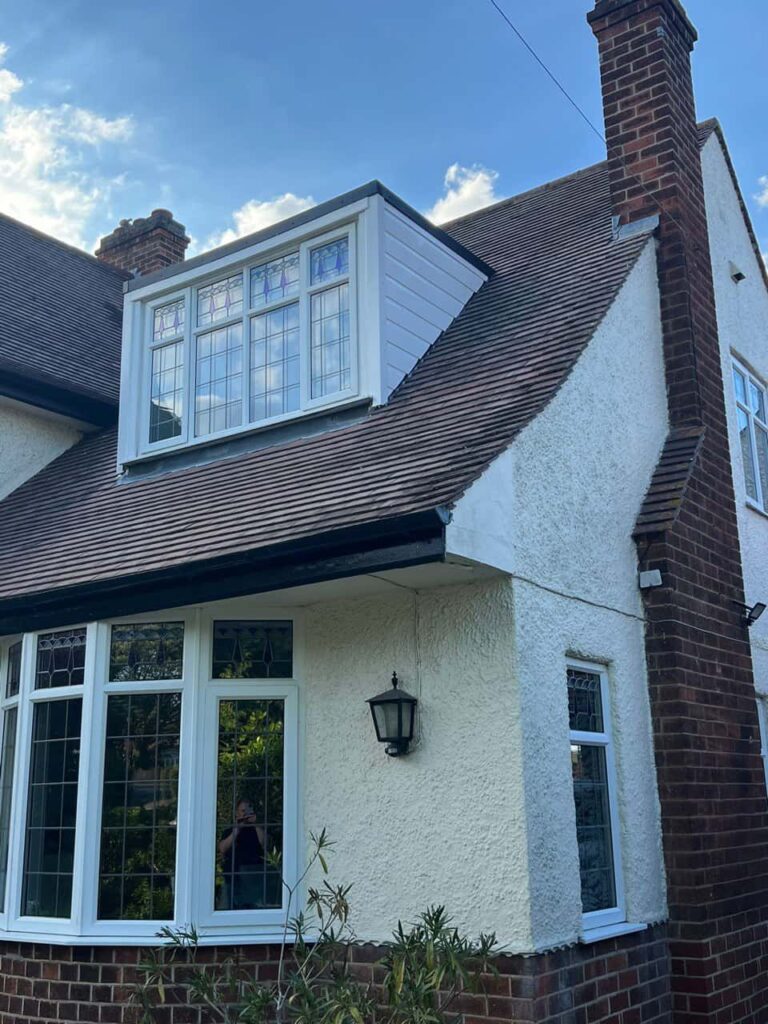Introduction
Among the many components that make up a strong and reliable roof, lead flashing often plays a quiet but critical role. Tucked away along roof valleys, chimneys, and walls, flashing is your roof’s unsung hero—until it starts to fail. When it does, the consequences can be surprisingly costly. Unlike obvious damage like a broken tile or sagging gutter, lead flashing leaks are usually slow, hidden, and insidious.
At Cambourne Roofing Repairs, we frequently deal with properties across Cambridgeshire where unnoticed flashing faults have caused damage far beyond what the homeowner expected. Understanding the silent nature of these leaks can help you act early—and save your roof from more serious trouble.
What Is Lead Flashing and Why Does It Matter?
Lead flashing is used to create a watertight seal between roof surfaces and structural elements like chimneys, skylights, and adjoining walls. Lead is a preferred material thanks to its flexibility and durability, adapting well to the roof’s shape while resisting corrosion from the weather.
Its role is simple: redirect water away from vulnerable joints so it doesn’t seep into the building. When flashing is damaged, incorrectly installed, or simply aged, that protection is lost—opening the door to water ingress and rot.
Common Causes of Flashing Leaks
Lead flashing is durable, but like any roof material, it isn’t immune to issues. Here are some common culprits behind flashing failure:
- Age and weathering: Over time, even high-quality lead can fatigue under constant expansion and contraction.
- Poor installation: If flashing is not properly sealed or fixed into mortar joints, it can pull away from surfaces.
- Physical damage: Storms, foot traffic, or falling debris can dislodge or crack flashing sections.
- Mortar decay: Flashing that relies on brickwork can be compromised if mortar crumbles.
These problems may start small but will gradually worsen, especially during wet seasons in Cambourne.
Signs That Your Lead Flashing May Be Failing
Because the symptoms of flashing failure are subtle, homeowners often miss them. Watch for the following indicators:
- Damp patches on ceilings near chimneys or dormers
- Water staining on interior walls
- Mould or musty smells in the loft
- Cracks where the flashing meets brickwork
- Flashing visibly lifting or peeling away
By the time water is making its presence known inside your home, the flashing has already allowed moisture in for some time.
The Risks of Ignoring Flashing Leaks
Lead flashing leaks can cause a slow drip of damage that spreads without detection. Here’s why they’re considered a “silent killer” of roof integrity:
- Hidden water damage: Moisture can rot timbers and insulation in concealed roof cavities.
- Structural weakening: Over time, soaked timber can lose strength and warp, leading to sagging roofs or even partial collapse in severe cases.
- Mould growth: Damp environments breed mould, which is both unsightly and potentially harmful to health.
- Increased repair costs: What begins as a small patch-up job can evolve into full roof repairs if left unchecked.
This domino effect makes regular inspection of lead flashing a smart and necessary investment.
How Lead Flashing Repairs Are Carried Out
At Cambourne Roofing Repairs, we carry out comprehensive assessments and repairs, tailored to the condition of your flashing and surrounding roof features. Depending on the issue, solutions may include:
- Resealing joints with modern flashing tape or waterproof compounds
- Replacing sections of damaged or missing lead
- Reinserting flashing into mortar joints and repointing as needed
- Applying weatherproof coatings to prolong lifespan
Most importantly, we address the root cause—not just the symptom—ensuring your roof remains watertight and secure.
When to Get Your Flashing Checked
Given how unnoticeable lead flashing damage can be, regular checks are essential. We recommend:
- After major storms or high winds
- During annual roof inspections
- When buying or selling a property
- If you’re seeing any damp or staining near roof features
A proactive approach can prevent thousands in future repairs and protect the overall integrity of your home.
Conclusion
Lead flashing may not be the most visible part of your roof, but it is undeniably one of the most vital. A small failure in this area can silently lead to extensive—and expensive—problems. From damp damage to structural decay, ignoring flashing leaks is a gamble no homeowner should take.
If you live in Cambourne or the surrounding Cambridgeshire area and suspect your flashing may be compromised, contact Cambourne Roofing Repairs. We’ll provide expert assessment and timely repairs to keep your roof—and your home—fully protected.
Call us on: 01954 776 277
Click here to find out more about Cambourne Roofing Repairs
Click here to complete our contact form and see how we can help with your roofing needs.

